Weekly Update
This last week was fiscal week, which meant there were long days, sometimes going into the evening, of hearings and executive sessions in order to move bills out of fiscal committees by house of origin fiscal cutoff on Friday, Feb 24.
The committee meetings are marathons, sometimes having over 50 bill hearings. Then when they switch to executive session, a packet of bills and potential amendments are briefed, and then legislators go back into caucus to discuss those bills before coming back to vote. Bills with a fiscal impact that didn’t pass out of committee by Friday are considered dead. The exception are bills deemed necessary to implement the budget (NTIB). Bills given this designation are not subject to the cutoff calendar. Some bills that die also come back in the budget.
Frequently, bills heard in fiscal committees are amended to include two clauses – “null and void” or “subject to appropriation.” These clauses allow bills to proceed through the process but provide “escape hatches” if the policies put forward in the bill are not funded in the final adopted budget.
Put another way, inclusion of these clauses makes implementation of the bill contingent upon budget funding.
This coming week, action will turn to the respective Senate and House floors as they work through all of the bills approved by the fiscal and policy committees.
The next legislative cutoff is Wednesday, March 8th at 5 p.m. with the deadline for bills to be voted out of their house of origin (e.g., House bills must be approved by the House, and Senate bills approved by the Senate). During floor time it is not unusual for one of the bodies to go late into the evening, or even pull an all-nighter. Both chambers are anticipated to work this coming Saturday, and the House has a placeholder to potentially work Sunday.
Highlights
Last Monday was Children’s Day in Olympia, so there were kids on the floor and in the gallery during floor action. They passed a resolution celebrating children’s day, and in the House, they also passed HB 1020, Designating the Suciasaurus rex as the official dinosaur of the state of Washington during children’s day.
The idea for a state dinosaur was originally brought forward in 2019 by a group of fourth-graders. The bill passed with a vote of 88 to 5. Maybe this is the year for the state dinosaur!
TVW’s Legislative Review does clips each day highlighting some of the hot topics of the day. You can find links to the Legislative Review videos here.
Session Primers
A Primer on the Rules Committee
Check out this short and interesting video from House Speaker Laurie Jinkins that explains the role of the Rules Committee.
Before a bill can make it to the chamber floor for debate and vote it must first make it out of the Rules Committee. This can be a fairly confusing process, especially since the House and Senate use different terminology for parts of the Rules Committee process. To help better understand this process we wanted to provide a primer on the Rules Committee. The Rules committee is a powerful committee and is often referred to as “The Gatekeeper”. Some people also say that the Rules committee is where bills go to die.
This is because it is a big hurdle to get pulled out of the Rules committee and brought to the floor and many bills don’t make it through. The process for getting pulled from Rules can seem complicated and can also be difficult to influence. The simplified explanation of the Rules committee is that it is a two-step process to determine which bills will be placed on the floor calendar for amendment, debate, and ultimately for a vote by the full chamber (House or Senate).
The following is a brief summary of each chamber’s process for the Rules Committee. The processes are very similar, but given the use of different terminology and some nuances I am explaining them separately. You can also get more details on the Rules Committee here.
Senate Rules Committee Process
In Senate Rules there are two calendars – the white sheet and the green sheet. The white sheet is where bills are sent immediately after passing out of a standing committee. The green sheet is a consideration calendar made up of bills that have been “pulled” by Rules committee members from the white sheet and is essentially the list of bills eligible to go to the floor. Bills can be pulled from the white to green sheet without debate or vote.
Senate Rules Committee members get a predetermined number of pulls. Once on the green sheet they are eligible to pull to the floor at the next Rules meeting, but to make it to the floor they are first debated and voted on by Rules committee members. Bills can also be pulled in “packages” where groups of bills may be voted out of Rules at one time. Senate Rules also allows what is known as a “leadership pull”, which is where a package of bills can be pulled by leadership from the Review and/or Consideration calendars to the floor. If a bill is voted out of the Rules committee it is added to the floor calendar for second and third reading.
House Rules Committee Process
There are also two calendars in House Rules – the “Rules Review” calendar and the “Rules Consideration” calendar. Bills referred from a standing committee are placed on the Rules Review calendar. Rules Committee members can then pull a bill from the Rules Review calendar to the Rules Consideration calendar. This is the first pull. House Rules Committee members get a predetermined number of pulls.
At a later meeting a member can do a second pull to move the bill from the Rules Consideration calendar to the floor calendar. Rules members vote on every motion to pull a bill. If a bill is voted out of the Rules committee it is added to the floor calendar for second and third reading. House Rules also allows what is known as a “leadership pull”, which is where a package of bills can be pulled from the Review and/or Consideration calendars to the floor.
These are the following bills that did not survive the fiscal committee cutoff:
- HB 1298/SSB 5258: Increasing the supply and affordability of condominium units and townhouses as an option for homeownership
- SHB 1388: Protecting tenants by prohibiting predatory residential rent practices and by applying the consumer protection act to the residential landlord-tenant act and the manufactured/mobile home landlord-tenant act
- SHB 1735: Adding net ecological gain as a voluntary element of comprehensive plans under the growth management act
- SSB 5060: Requiring the registration of rental and vacant housing units
- SSB 5609: Establishing housing approval requirements that will eliminate Washington’s housing shortage
Here are some notable bills that are still moving through the legislative process:
- 2SHB 1025: Creating a private right of action for harm from violations of the state Constitution or state law by peace officers
- SHB 1026: Concerning local government design review
- 2SHB 1110: Increasing middle housing in areas traditionally dedicated to single-family detached housing
- SHB 1124: Protecting tenants from excessive rent and related fees by providing at least six months’ notice for rent increases over a certain amount, allowing tenants the right to terminate a tenancy without penalty, and limiting late fees
- 2SHB 1181: Improving the state’s response to climate change by updating the state’s planning framework
- SHB 1363: Concerning vehicular pursuits
- 2SHB 1445: Concerning law enforcement and local corrections agency misconduct through investigations and legal actions
- HB 1670: Raising the limit factor for property taxes
- SB 5058: Exempting buildings with 12 or fewer units that are no more than two stories from the definition of multiunit residential building
- 2SSB 5120: Establishing 23-hour crisis relief centers in Washington state
- 2SSB 5290: Concerning consolidating local permit review processes
- 2SSB 5536: Concerning controlled substances, counterfeit substances, and legend drug possession and treatment
- SSB 5466: Promoting transit-oriented development












